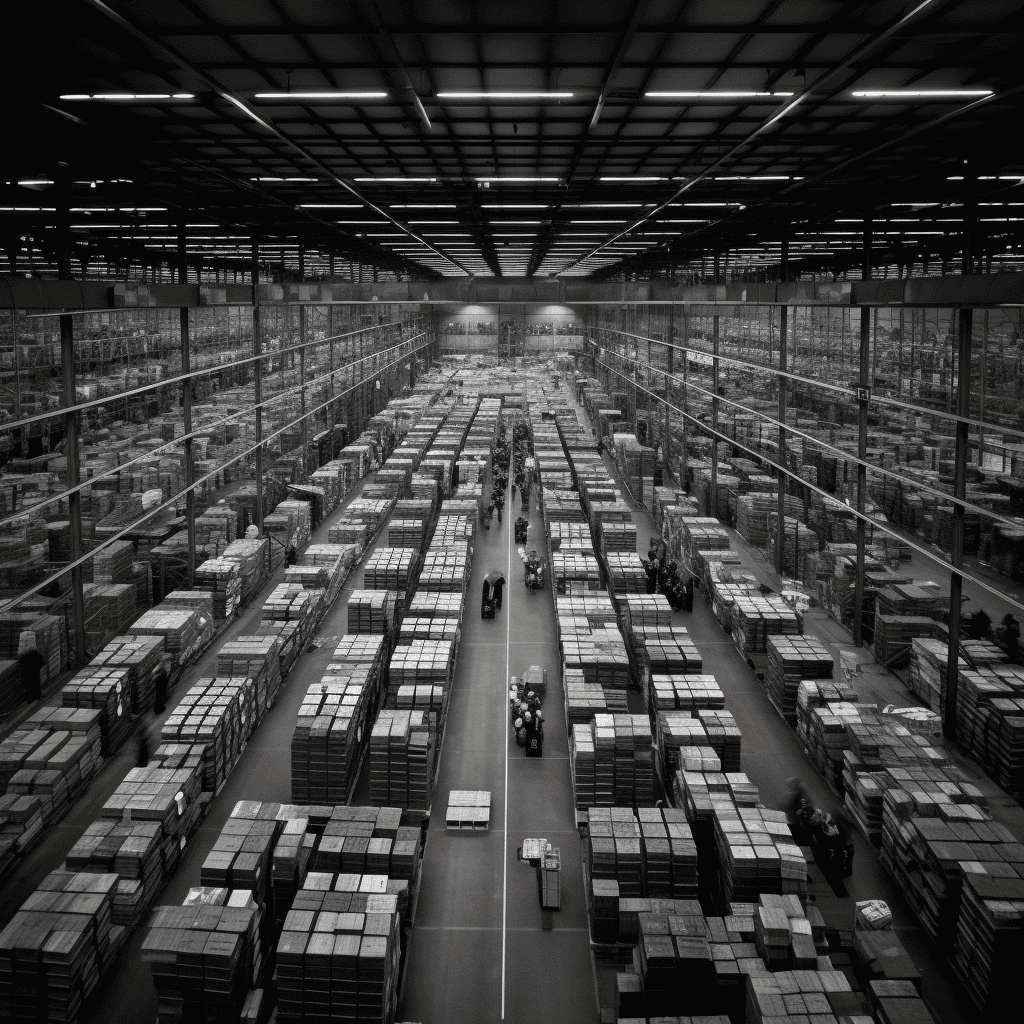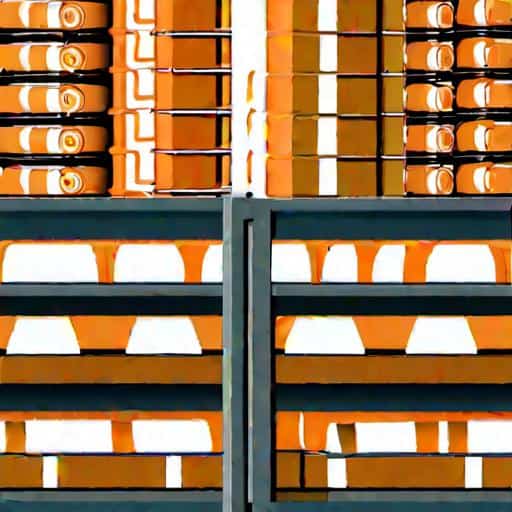
Third-party warehousing is an outsourcing service that has become increasingly popular in recent years. Companies who do not have the resources or expertise to manage their own supply chain, inventory management, fulfillment, and distribution operations can outsource these tasks to third-party logistics (3PL) providers. These providers take care of everything from warehousing to transportation services, allowing businesses to focus on their core competencies.
3PL providers offer a range of services, including freight forwarding, inventory management, and transportation services. They also provide customized solutions to meet the needs of individual businesses. This can include everything from managing the entire supply chain to providing specialized services such as ecommerce fulfillment.
Outsourcing to a third-party warehouse can be a cost-effective solution for businesses of all sizes. By outsourcing their logistics operations, companies can reduce their overheads and focus on their core competencies. This can help to improve efficiency, reduce costs, and increase profitability. Additionally, outsourcing to a 3PL provider can provide businesses with access to specialized expertise and technology that they may not have in-house.
What is a 3rd Party Warehouse?
A 3rd party warehouse is a storage facility that is owned and operated by a commercial provider outside of a company. It is an outsourced business that takes care of a company’s supply chain and logistics operations. The term “3rd party” refers to the fact that the warehouse is not owned by the company that uses it, but rather by a third-party provider.
Definition
A 3rd party warehouse is a facility that is designed to store goods and products for businesses that do not have the space or resources to do so themselves. These warehouses are owned and operated by third-party logistics providers (3PLs) who specialize in supply chain management and logistics operations. They offer a range of services, including inventory management, order fulfillment, and shipping and receiving.
History
The concept of 3rd party warehousing can be traced back to the early 20th century when businesses began to outsource their warehousing needs to specialized providers. This allowed companies to focus on their core competencies while leaving the logistics and supply chain management to experts in the field. Today, 3rd party warehousing is a common practice across a wide range of industries, including retail, manufacturing, and e-commerce.
Benefits
There are several benefits to using a 3rd party warehouse for your business. One of the biggest advantages is the cost savings that come with outsourcing your warehousing needs. By using a 3PL provider, you can avoid the expenses associated with building and maintaining your own warehouse, such as rent, utilities, and labor costs.
Another benefit of using a 3rd party warehouse is the flexibility it provides. With a 3PL provider, you can easily scale your warehousing needs up or down depending on your business’s demands. This allows you to be more agile and responsive to changes in the market.
Finally, using a 3rd party warehouse can help improve your supply chain efficiency. With a dedicated team of logistics experts managing your inventory, you can reduce the risk of stockouts and delays, and ensure that your products are delivered to your customers on time and in good condition.
How 3rd Party Warehouses Work
When it comes to managing inventory and fulfilling orders, many businesses turn to third-party warehouses, also known as 3PLs, for assistance. These warehouses provide a range of services to help businesses streamline their logistics and get products to customers more efficiently. Here’s a brief overview of how 3rd party warehouses work:
Process Overview
The process of working with a 3rd party warehouse typically begins with the business shipping their inventory to the warehouse’s facility. From there, the warehouse team will receive and sort the inventory, entering it into their online system and making sure it is properly stored. When a customer places an order, the warehouse team will pick and pack the items, then ship them out to the customer. Throughout this process, the warehouse will work closely with the business to ensure that everything is running smoothly and efficiently.
Inventory Management
One of the key benefits of working with a 3rd party warehouse is that they handle inventory management on behalf of the business. This includes receiving and storing inventory, as well as keeping track of stock levels and ensuring that everything is properly organized. Many warehouses use advanced inventory management systems to track inventory in real-time, which can help businesses make more informed decisions about when to reorder products and how much to order.
Order Fulfillment
Another important service provided by 3rd party warehouses is order fulfillment. This involves picking and packing items from inventory, then shipping them out to customers in a timely and efficient manner. Warehouses may use a variety of shipping methods, depending on the needs of the business and the preferences of the customer. Some warehouses also offer additional services, such as gift wrapping or custom packaging, to help businesses provide a more personalized experience for their customers.
Overall, working with a 3rd party warehouse can be a great way for businesses to streamline their logistics and improve their order fulfillment process. By outsourcing these tasks to a trusted partner, businesses can focus on other aspects of their operations while still ensuring that their customers are getting the products they need in a timely and efficient manner.
Why Businesses Use 3rd Party Warehouses
Cost Savings
One of the primary reasons businesses use third-party warehouses is to save costs. Outsourcing supply chain operations to a 3PL can be more cost-effective than managing everything in-house. This is because 3PLs can spread their overhead costs across multiple customers, reducing the per-unit cost for each customer. Additionally, 3PLs can provide economies of scale when it comes to shipping and transportation, which can help businesses save money.
Scalability
Another reason businesses use third-party warehouses is for scalability. As a business grows, it may not have the resources or infrastructure to handle increased demand. By outsourcing warehousing and distribution to a 3PL, businesses can quickly and easily scale up or down as needed. This allows businesses to focus on their core competencies and leave logistics to the experts.
Focus on Core Competencies
By outsourcing warehousing and distribution to a 3PL, businesses can focus on their core competencies. This is especially important for ecommerce businesses, where rapid growth can quickly outpace a company’s logistics capabilities. By partnering with a 3PL like AMCO, businesses can focus on creating new products and improving customer experiences, while leaving logistics to the experts.
Integrated operations are also a great advantage of 3PLs. The 3PL provider can take care of every aspect of the supply chain, from receiving inventory to shipping orders. This means businesses can have a single point of contact for all their logistics needs, simplifying the process and reducing the risk of errors.
In conclusion, businesses use third-party warehouses for a variety of reasons, including cost savings, scalability, and the ability to focus on core competencies. By partnering with a 3PL like AMCO, businesses can enjoy these benefits and more, while leaving logistics to the experts.
Choosing a 3rd Party Warehouse
Choosing a 3rd party warehouse is a critical decision for any business that wants to outsource its warehousing and distribution operations. A reliable 3rd party warehouse can help businesses reduce costs, increase efficiency, and improve customer satisfaction. However, selecting the right warehouse partner requires careful consideration of several factors.
Factors to Consider
When choosing a 3rd party warehouse, businesses need to consider several factors:
- Location: The location of the warehouse is a critical factor to consider. If the warehouse is too far from the business’s customers, it may result in longer delivery times and higher shipping costs. On the other hand, if the warehouse is too close to the business’s customers, it may result in higher rental costs.
- Capacity: The capacity of the warehouse is another critical factor to consider. The warehouse must have enough space to accommodate the business’s inventory and handle its peak season demands.
- Experience: The experience of the 3rd party warehouse is also a critical factor to consider. The warehouse must have experience in handling the business’s products and managing its inventory.
- Technology: The technology used by the 3rd party warehouse is another critical factor to consider. The warehouse must have a reliable inventory management system that can integrate with the business’s system. It should also have a robust order fulfillment system that can handle the business’s orders efficiently.
- Cost: The cost of the 3rd party warehouse is also a critical factor to consider. The business must compare the costs of different warehouses and choose the one that offers the best value for money.
Questions to Ask
When choosing a 3rd party warehouse, businesses need to ask several questions:
- What types of products does the warehouse handle? The business needs to ensure that the warehouse has experience in handling its products.
- What is the warehouse’s capacity? The business needs to ensure that the warehouse has enough space to accommodate its inventory.
- What is the warehouse’s experience? The business needs to ensure that the warehouse has experience in managing its inventory and handling its orders.
- What technology does the warehouse use? The business needs to ensure that the warehouse has a reliable inventory management system and order fulfillment system.
- What is the cost of the warehouse? The business needs to compare the costs of different warehouses and choose the one that offers the best value for money.
By considering these factors and asking these questions, businesses can choose the right 3rd party warehouse partner that can help them improve their warehousing and distribution operations.
Conclusion
Third-party warehousing and distribution can be a valuable asset to companies of all sizes. By outsourcing logistics to a 3PL provider, businesses can reduce costs, improve efficiency, and focus on their core competencies.
According to recent reports, many 3PLs have experienced significant growth in profitability in recent years, thanks in part to the scarcity of warehouse space and workers. However, labor costs remain a major concern for many providers, with some reporting that labor accounts for up to 75% of their total expenses.
When choosing a 3PL provider, it is important to consider factors such as location, capacity, and service offerings. Some providers specialize in certain industries or types of products, while others offer a wide range of services to meet the needs of diverse clients.
It is also important to establish clear expectations and communication channels with your 3PL provider. This can help ensure that your products are stored, handled, and shipped according to your specifications, and that any issues or concerns are addressed promptly and effectively.


